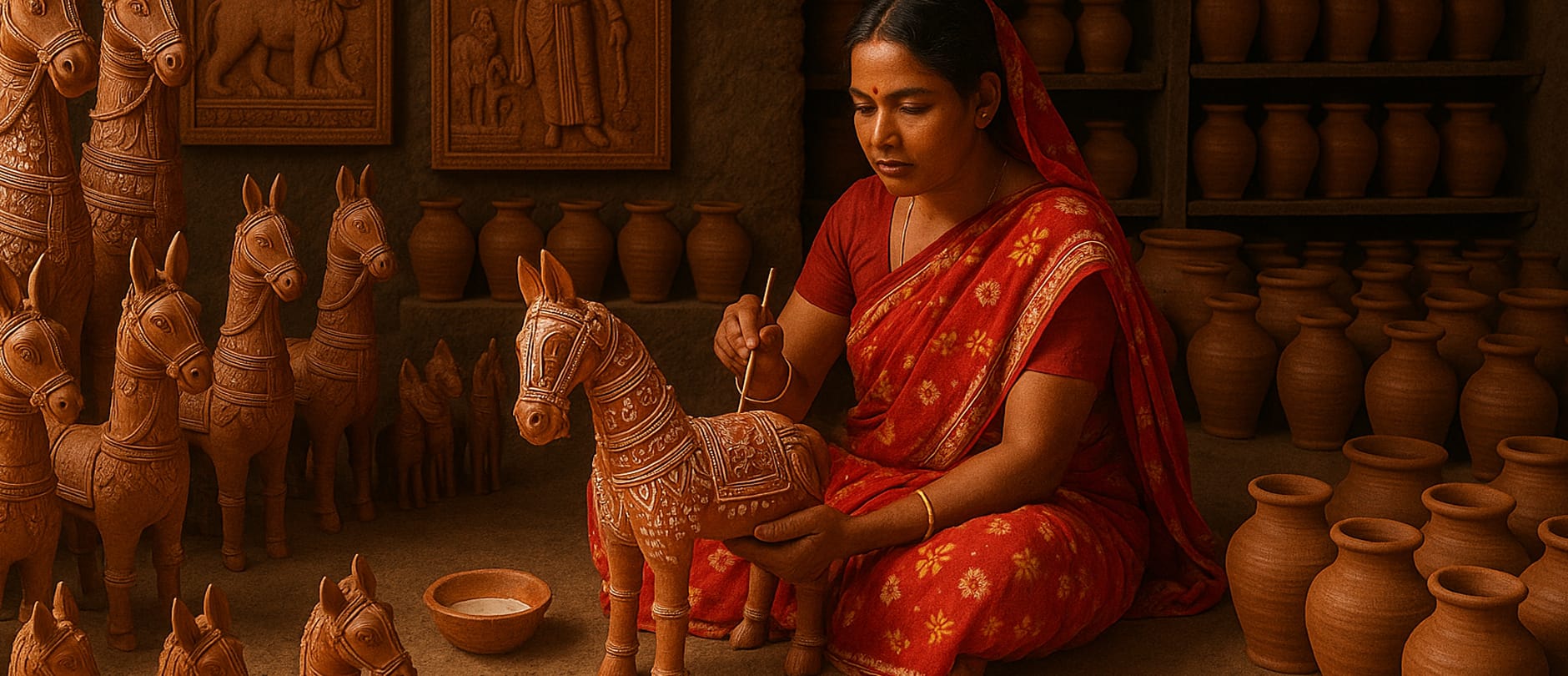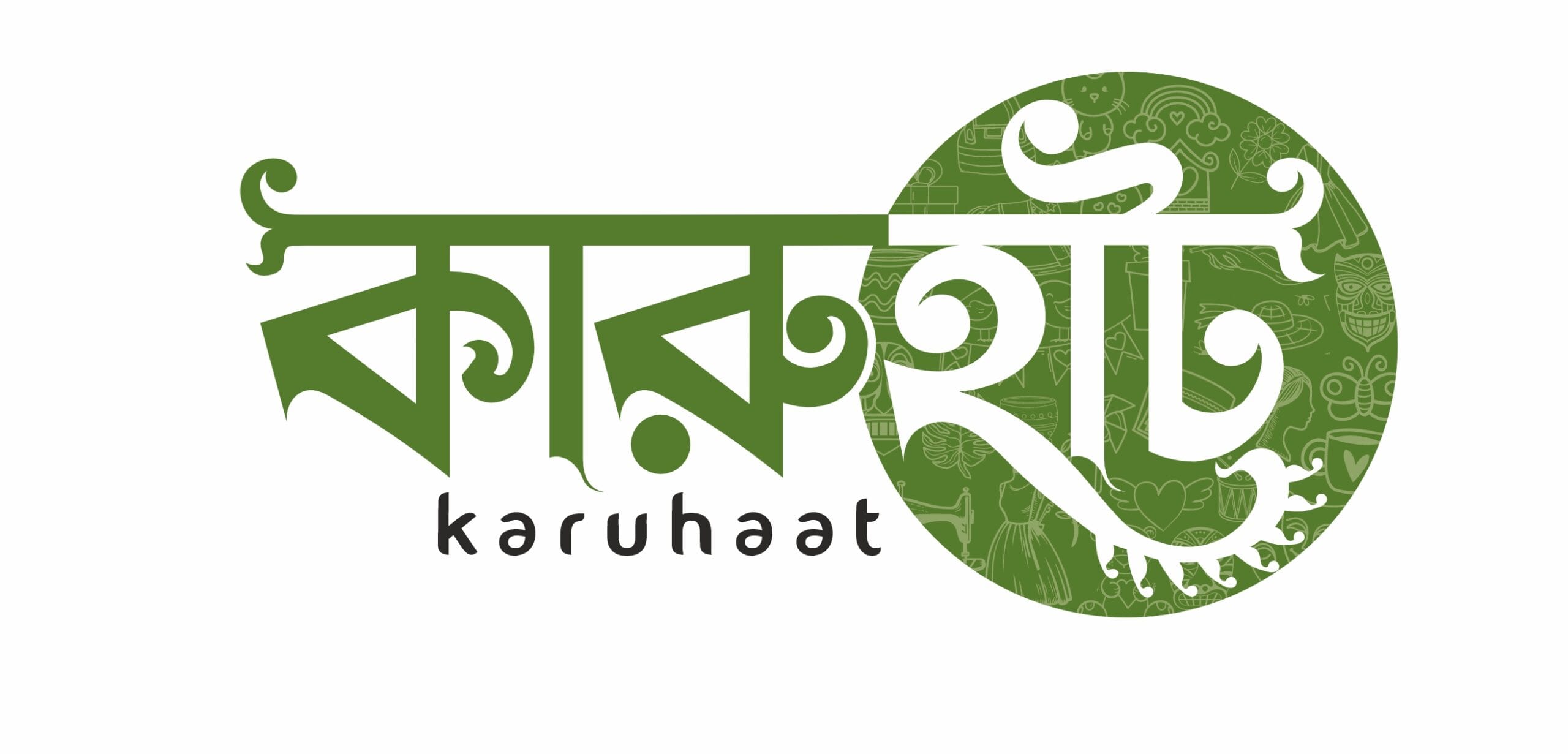No products in the cart.

In the heart of West Bengal, the earth itself is moulded into stories by artisans, a legacy that dates back 5,000 years. Originating from the ancient Indus Valley Civilization, terracotta craft has grown to embody the struggle of human creativity amidst the test of time and culture.
This living tradition today grapples with a fork in the road between the legacy of ancient techniques and the demands of contemporary markets. In villages like Panchmura, the rhythmic thud of the potters’ wheels is still heard in narrow lanes, and master craftspeople turn plain clay into intricate works of art that are winning international attention.
Terracotta Craft in West Bengal: The Tradition and Transformation
Roots in Antiquity and the Manifold Supports of Royal Patronage
West Bengal has a tradition of terracotta craft that dates back over five millennia, with its origins rooted in the artistic expression of the Indus Valley Civilization. This ancient art form attained a new peak when the Malla dynasty prevailed in the 7th century AD, especially in Bishnupur, where the kings inspired its infusion into the temples’ design Beautiful temples were built in between the late 16th and 19th centuries, decorated with stunning terracotta panels, showcasing scenes from Krishna-related mythology, along with other religious epics.
Modern day production hubs and issues
Now, the terracotta craft of West Bengal has a fabled core with stone pottery clusters in well-known production centres — Panchmura, Surul, Chaltaberia and Shetpur-Palpara. Its terracotta horses and figurines, especially in Panchmura, are noteworthy. But the industry is still dealing with major challenges, from outdated tools and logistical hurdles to dependence on local business. The availability of cheaper synthetic alternatives as a result of globalization represents a significant challenge for traditional craftspeople.
International Recognition and Market Presence
The terracotta craft of West Bengal has received great international recognition, with increasing demand in overseas markets. The GI index validated the ancient terracotta craft of Panchmura as it manifests distinctive artistic and cultural value. For more than a decade, this recognition has opened the doors for international trade and finding a place for Bengal’s terracotta products in foreign markets.
Social dynamics and community impact
In villages such as Panchmura, the terracotta craft provides the economic backbone for many families. To help artisans, the Mritshilpi Samabay Samity focuses on all-round development including training, finances, and marketing. But this traditional craft has become a powerful means of women’s empowerment, providing income for women while preserving culture.
Communities of Practice and Their Craftsmanship
The Kumbhakar community continues to practice these ancient terracotta-making techniques, shaping a wide variety of objects from household items to decorative works. While women artisans play a crucial role in passing on the craft, they encounter particular obstacles to building their skills and accessing the market. This has contributed to a greater demand for soft skills and marketing know-how in the competitive workplace.
Administrative Structure and Support Systems
Government initiatives SITRA and IRDP work in collaboration to give training program, funds and technical enhancements to empower such people. In addition, these initiatives are supplemented by the Craft Council of West Bengal, which provides extensive support to artisans, promoting sustainability and the craft’s growth.
The Road Ahead: Growth Potential and Conservation
So the future of terracotta craft in West Bengal is in a strategic shift towards modernization while maintaining authenticity of the community. As such, there are many opportunities in global markets, especially for consumers who appreciate handcrafted, culturally relevant products. These unique traditions must be actively preserved and promoted through collaboration between government, institutions and local communities to survive for future generations.
Preserving a Living Legacy
As the terracotta craft of West Bengal navigates the currents of tradition and modernity, its tale echoes the wider struggles of traditional arts in the contemporary landscape. The craft’s future hinges on carefully balancing the preservation of ancient techniques with adaptation to modern market needs.
The fate of this multi-millennia tradition is now in the hands of artisans, institutions, and consumers. But with sustained patronage and a little bit of a marketing twist, the terracotta craft of West Bengal could be much more than a mere fight for existence; it could be the lifeblood of a thriving, financially rewarding, lived culture of past, present and future.





